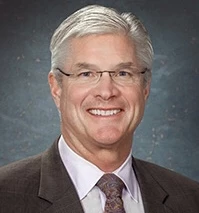Table Of Content

For that situation the House minority leader can play the role of a de facto "leader of the opposition", often more so than the Senate minority leader, due to the more partisan nature of the House and the greater role of leadership. Jeffries narrowly defeated California Rep. Barbara Lee in caucus elections in November to claim the No. 5 leadership post. Some of Lee's allies claimed sexism and ageism in the vote, and criticized Jeffries as too centrist. Still, the victory set up the 48-year-old New York lawmaker, once called "Brooklyn's Barack Obama," as a possible speaker of the House one day, which would make him the first black Speaker in history if that happens. And his addition means there's another African-American in Democratic leadership. The 78-year-old Clyburn is the highest-ranking African-American lawmaker in Congress.
House of Representatives
“But investments that show the world we are serious about standing by all of our allies, providing humanitarian aid, and maintaining America’s leadership on the world stage. In the United States House of Representatives, the current majority leader is Steve Scalise, who assumed office on January 3, 2023. In the United States Senate, the current majority leader is Chuck Schumer, who assumed the office on January 20, 2021. Twenty-five Republicans voted against the fourth bill, which included measures that could lead to a ban on TikTok in the United States and that would redirect funds from seized Russian assets to help aid Ukraine.
Want to Work for a Member of Congress?
Five activities illustrate how minority leaders seek to accomplish this primary goal. Under Rule XIII, clause 6, the Rules Committee may not (except in certain specified circumstances) issue a "rule" that prevents the minority leader or a designee from offering a motion to recommit with instructions. Since Snell's description, other responsibilities have been added to the job.
Search All Oral History Media

The speaker, committee chairs, and some other officials are generally from the majority party; they have counterparts (for instance, the "ranking members" of committees) in the minority party. The states of Washington and California use a similar (though not identical) system to that used by Louisiana. The 52-year-old Wyoming lawmaker assumes the No. 3 House GOP leadership post more than three decades after it was once held by her father, former Vice President Dick Cheney. She's the highest-ranking woman in GOP leadership, and assumed the position after Washington Rep. Cathy McMorris Rodgers decided not to seek another term in the party's leadership ranks. The political scion was first elected in 2016 and didn't make much noise during her first term, but now she could become one of the GOP's most visible faces, especially as Republicans try to counter a large number of new freshmen women Democrats. Before members are assigned to committees, each committee’s size and the proportion of Republicans to Democrats must be decided by the party leaders.
Resources for National History Day
It wasn't lost on many Democrats this year, though, that the trio at the top of the leadership ranks are all in their late seventies. And there's a proposal Pelsoi has backed to change that, term-limiting the top three spots to bring change over the next few years. As outlined in the Constitution, the House represents citizens based on district populations, while the Senate represents citizens on an equal state basis.
Hoyer Statement on Ukrainian President Zelenskyy's Address to a Joint Meeting of Congress
Mitch McConnell to end long tenure as top US Senate Republican - Reuters
Mitch McConnell to end long tenure as top US Senate Republican.
Posted: Wed, 28 Feb 2024 08:00:00 GMT [source]
Uncertainty hangs over the speakership election, as Kevin McCarthy attempts to quell a conservative revolt that could derail his long-held hopes of claiming the speaker’s gavel. The Constitution empowers the House of Representatives to impeach federal officials for "Treason, Bribery, or other high Crimes and Misdemeanors" and empowers the Senate to try such impeachments. The House may approve "articles of impeachment" by a simple majority vote; however, a two-thirds vote is required for conviction in the Senate. A convicted official is automatically removed from office and may be disqualified from holding future office under the United States. No further punishment is permitted during the impeachment proceedings; however, the party may face criminal penalties in a normal court of law. Power is nowhere concentrated; it is rather deliberately and of set policy scattered amongst many small chiefs.
Hoyer Congratulates Leaders of the Congressional Hispanic Caucus for the 118th Congress
The purposes of obstruction are several, such as frustrating the majority party's ability to govern or attracting press and media attention to the alleged ineffectiveness of the majority party. "We know how to delay," remarked Minority Leader Gephardt.[40] Dilatory motions to adjourn, appeals of the presiding officer's ruling, or numerous requests for roll call votes are standard time-consuming parliamentary tactics. By stalling action on the majority party's agenda, the minority leader may be able to launch a campaign against a "do-nothing Congress" and convince enough voters to put his party back in charge of the House. To be sure, the minority leader recognizes that "going negative" carries risks and may not be a winning strategy if his party fails to offer policy alternatives that appeal to broad segments of the general public. In addition, the minority leader has a number of other institutional functions.

McCarthy will become House Speaker when the new Republican-majority House convenes in January. In his November letter, Jeffries called winning back the House majority “our top non-governmental priority”. In an interview with The Atlantic, for example, Jeffries said he would never “bend the knee to hard-left democratic socialism”.
As The New York Times, recently wrote, the "Pelosi-Hoyer frenemies dynamic, long a subject of intrigue in the Capitol, is growing ever more complex" as they're back in power together. He's the longest-serving current Democrat in the House, first elected in 1981. Hoyer is also the only white male in the top ranks of Democratic leadership.
In February, Senator Murray joined her colleagues in passing a bipartisan national security supplemental, without border policy and funding provisions, by a vote of 70-29; in terms of funding, the House-passed supplemental is materially identical to the Senate supplemental in nearly every way. The Constitution provides that the House may choose its own speaker.[50] Although not explicitly required by the Constitution, every speaker has been a member of the House. The Constitution does not specify the duties and powers of the speaker, which are instead regulated by the rules and customs of the House. Speakers have a role both as a leader of the House and the leader of their party (which need not be the majority party; theoretically, a member of the minority party could be elected as speaker with the support of a fraction of members of the majority party). Under the Presidential Succession Act (1947), the speaker is second in the line of presidential succession after the vice president.
The San Francisco lawmaker has had her detractors, and many incoming freshmen in swing district campaigned on new leadership. On Thursday, fifteen in her caucus either voted for someone else or simply voted present. Still, those defections were much fewer than the 78-year-old feared last fall, showcasing her deal-making prowess that even many Republicans privately praise her for. Whether working on Capitol Hill or in his / her congressional district, a representative’s schedule is extremely busy. Often beginning early in the morning with topical briefings, most representatives move quickly among caucus and committee meetings and hearings.
His ascent to Democratic leader was long planned and came with the explicit backing of his predecessor. Now, as the new fresh face of House Democrats, Jeffries has vowed to bring his fractious caucus together with the goal of clawing back control of the chamber in two years. In remarks after his election, he said he hoped to work with Republicans, but would not remain silent if they continued to embrace extremism. He was considered next in line for the speakership in 2015, but his bid imploded. McCarthy was eventually elected minority leader in 2018, after Democrats won the House. After a historically weak performance by the minority party in a midterm election, House Republicans have struggled to unite.

No comments:
Post a Comment